Ning Jing
Learning Remote Sensing Object Detection with Single Point Supervision
May 23, 2023
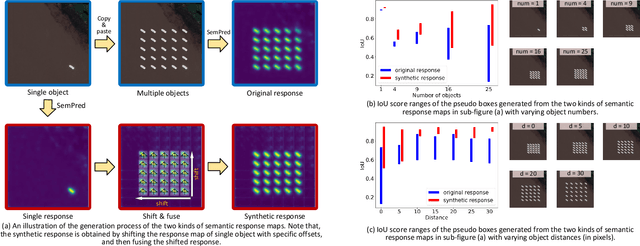
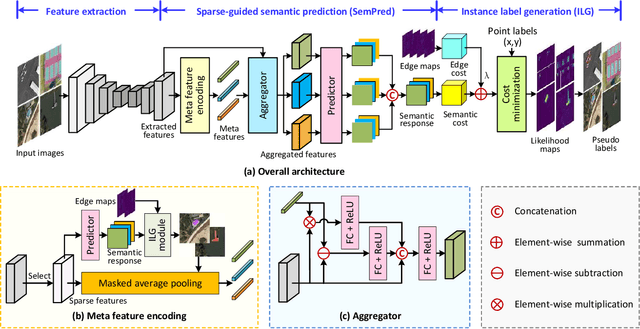

Abstract:Pointly Supervised Object Detection (PSOD) has attracted considerable interests due to its lower labeling cost as compared to box-level supervised object detection. However, the complex scenes, densely packed and dynamic-scale objects in Remote Sensing (RS) images hinder the development of PSOD methods in RS field. In this paper, we make the first attempt to achieve RS object detection with single point supervision, and propose a PSOD framework tailored with RS images. Specifically, we design a point label upgrader (PLUG) to generate pseudo box labels from single point labels, and then use the pseudo boxes to supervise the optimization of existing detectors. Moreover, to handle the challenge of the densely packed objects in RS images, we propose a sparse feature guided semantic prediction module which can generate high-quality semantic maps by fully exploiting informative cues from sparse objects. Extensive ablation studies on the DOTA dataset have validated the effectiveness of our method. Our method can achieve significantly better performance as compared to state-of-the-art image-level and point-level supervised detection methods, and reduce the performance gap between PSOD and box-level supervised object detection. Code will be available at https://github.com/heshitian/PLUG.
Type-enriched Hierarchical Contrastive Strategy for Fine-Grained Entity Typing
Aug 22, 2022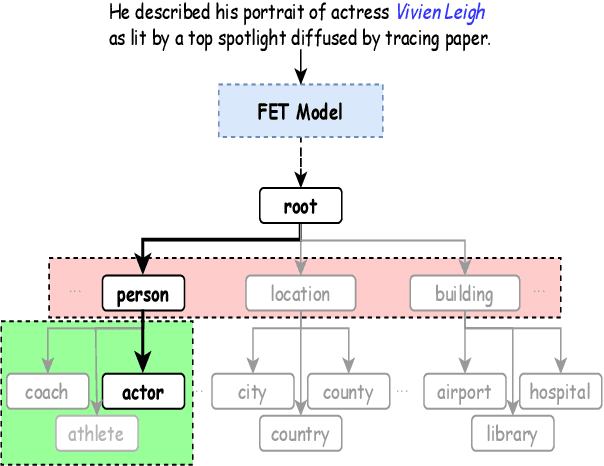

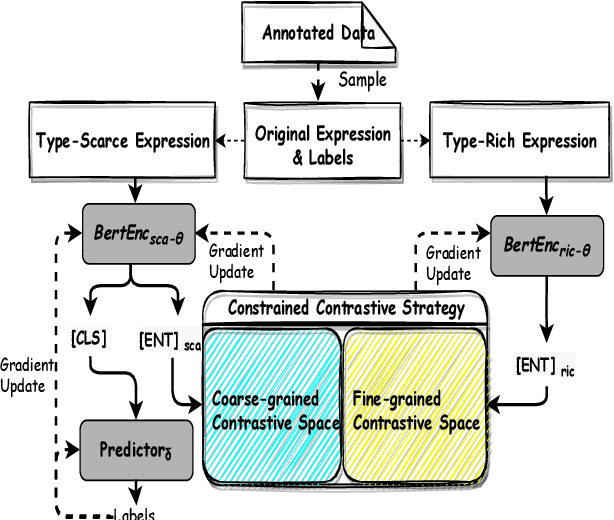
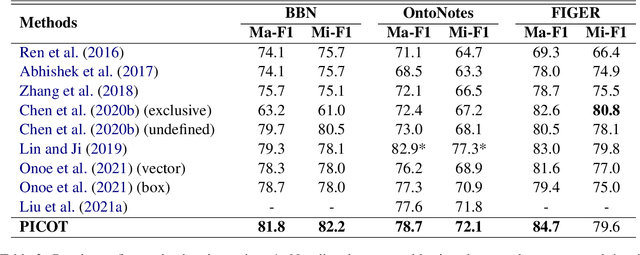
Abstract:Fine-grained entity typing (FET) aims to deduce specific semantic types of the entity mentions in text. Modern methods for FET mainly focus on learning what a certain type looks like. And few works directly model the type differences, that is, let models know the extent that one type is different from others. To alleviate this problem, we propose a type-enriched hierarchical contrastive strategy for FET. Our method can directly model the differences between hierarchical types and improve the ability to distinguish multi-grained similar types. On the one hand, we embed type into entity contexts to make type information directly perceptible. On the other hand, we design a constrained contrastive strategy on the hierarchical structure to directly model the type differences, which can simultaneously perceive the distinguishability between types at different granularity. Experimental results on three benchmarks, BBN, OntoNotes, and FIGER show that our method achieves significant performance on FET by effectively modeling type differences.
An Ontology of Preference-Based Multiobjective Metaheuristics
Mar 10, 2017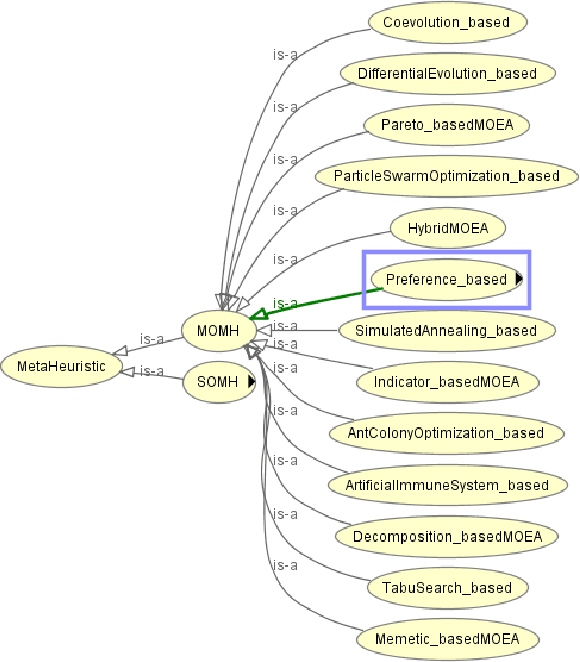
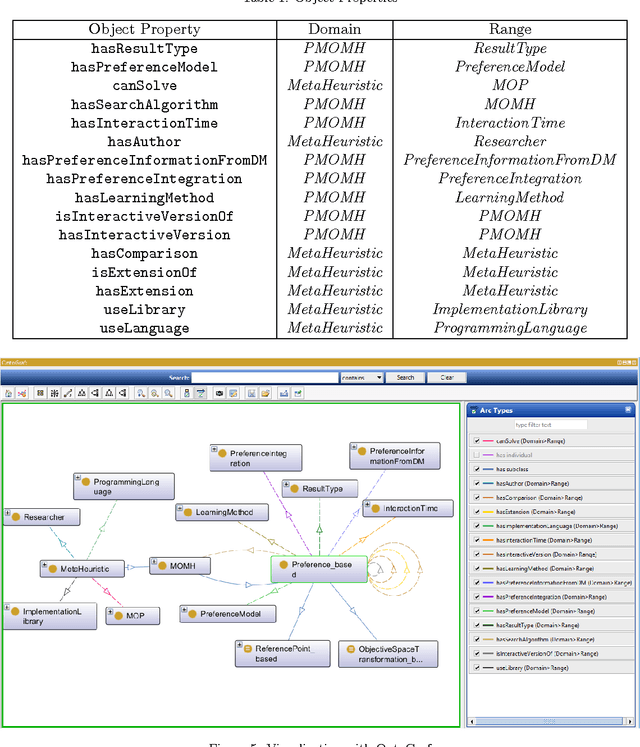
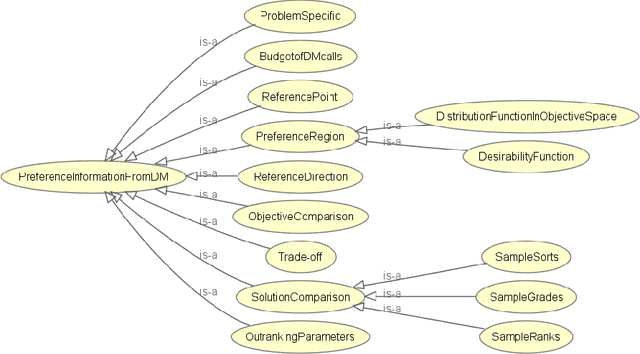
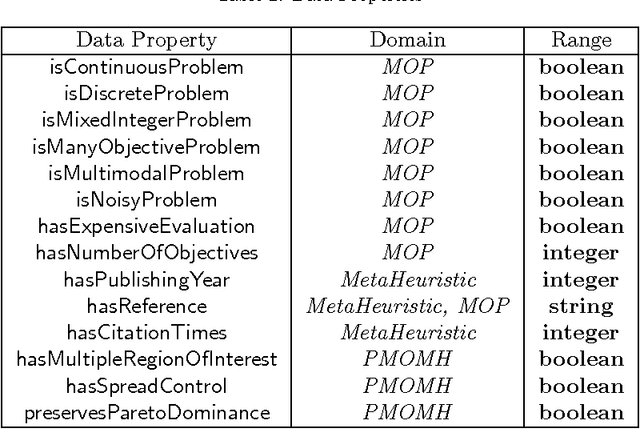
Abstract:User preference integration is of great importance in multi-objective optimization, in particular in many objective optimization. Preferences have long been considered in traditional multicriteria decision making (MCDM) which is based on mathematical programming. Recently, it is integrated in multi-objective metaheuristics (MOMH), resulting in focus on preferred parts of the Pareto front instead of the whole Pareto front. The number of publications on preference-based multi-objective metaheuristics has increased rapidly over the past decades. There already exist various preference handling methods and MOMH methods, which have been combined in diverse ways. This article proposes to use the Web Ontology Language (OWL) to model and systematize the results developed in this field. A review of the existing work is provided, based on which an ontology is built and instantiated with state-of-the-art results. The OWL ontology is made public and open to future extension. Moreover, the usage of the ontology is exemplified for different use-cases, including querying for methods that match an engineering application, bibliometric analysis, checking existence of combinations of preference models and MOMH techniques, and discovering opportunities for new research and open research questions.
 Add to Chrome
Add to Chrome Add to Firefox
Add to Firefox Add to Edge
Add to Edge